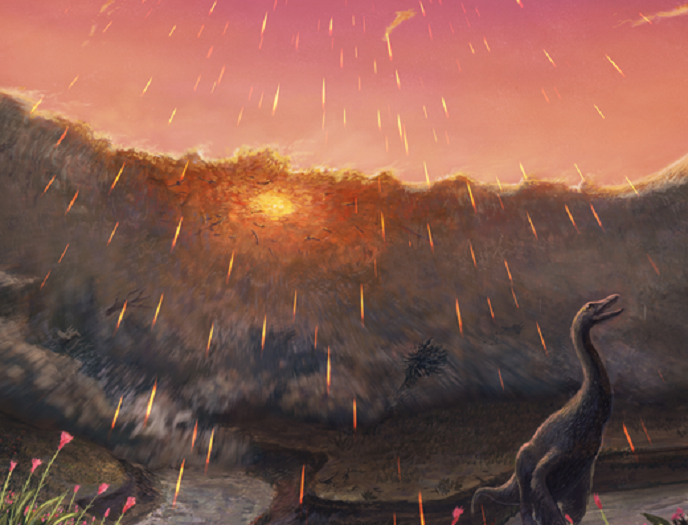 © Joshua Knüppe
© Joshua Knüppe
Spring is a time of renewal. The rains come, flowers bloom, trees begin to grow and reproduce. It’s no wonder that this is the season most celebrated with rites and festivals. But on a spring day 66 million years ago, it was all about destruction, not creation.

Dinosaur doomsday

A city-size asteroid struck, wiping out all the dinosaurs. We don’t know the year, but now we know it was in springtime. According to a new study in the journal ‘Nature’, well-preserved fossils of fish were found at North Dakota’s Tanis fossil site in the United States that perished because of the devastating impact that took place in spring. In fact, the spot where the asteroid hit was about 3 500 km away from the site. Researchers analysed the bones of fish found at Tanis that died less than 60 minutes after the asteroid impacted. These fossilised paddlefishes and sturgeons were very well preserved. They still have particles called spherules stuck in their gills. These are small bits of molten rock thrown up from the impact into space that crystallised and fell back to Earth the same day. Their examination indicates that the particles were still falling when the fish perished. The fish seem to have died when they were buried alive by sediment shaken up in the collision. Analyses shed light on the bones’ annual growth patterns and the abundance of food as they relate to seasonality. The bones showed increased growth levels associated with springtime. In the leaner winter months, there’s less growth. The availability of food increases in springtime, but reaches a peak during summer. This peak hadn’t yet been reached. Results all point to spring.
One of the worst days in the history of life on Earth.

“I think spring puts a large group of the late Cretaceous biota (animal and plant life) in a very vulnerable spot because they were out and about looking for food, tending to offspring and trying to build up resources after the harsh winter,” lead author Melanie During, a PhD student at Uppsala University in Sweden, told ‘CNN’. “These impact spherules, they got ejected into space, and some of them may have even circled the moon and then they rained back down on Earth.” When describing the Tanis fossil site, During explained: “This deposit literally looks like a car crash frozen in place. It looks like the most violent thing I have ever seen, preserved in pristine condition.” “In the Southern Hemisphere, many organisms would have been in hibernation or sheltering. That could have helped them,” During told ‘BBC’. “In spring, you expect animals to be tending to their offspring which are very fragile, or perhaps they are still tending to eggs, waiting for them to hatch or be looking for food. That puts them in a vulnerable position.” Why should we care just when an asteroid hit so many millions of years ago? The timing could help scientists understand the ongoing mystery of why some animals such as birds, crocodiles and snakes managed to survive while others didn’t.

source:cordis.europa.eu








